Abstract
The effects of certain cultural conditions on the yield of dry mycelium, protein, and total amino acid content of Rhizopus oligosporus Saito (NRRL 2710), Rhizopus rhizopodiformis (Cohn apud Lichtheim) Zopf (NRRL 6246), and Absidia corymbifera (Cohn) Sacc. et Trotter (NRRL 6247) were studied. The yield of mycelium was found to significantly increase as the spore inoculum was increased from 187,500 to 2,250,000 spores. But the total amino acids (grams/liter) did not change significantly, whereas the percentage of crude protein decreased. An inoculum containing approximately 750,000 spores/ml was used in all of the other experiments. Mycelial production was highest at 37 degrees C for all three molds. However, the best temperature for percentage of crude protein and total amino acids varied with the organism. The mycelial yield and total crude protein of R. oligosporus showed some significant changes as the C/N ratio was increased in 3% glucose medium. In a synthetic medium having a 15:1 C/N ratio, the strains of R. oligosporus, R. rhizopodiformis, and A. corymbifera had better yields from falactose than glucose, not only in dry mycelium but also in total crude protein (grams/liter) and total amino acids (grams/liter). R. oligosporus grew very well on several ammonium salts. but the maximum yield of dry mycelium, total crude protein (grams/liter), and total amino acids (grams/liter) occurred with ammonium sulfate. The optimum pH for both Rhizopus species was 4.0, although R. oligosporus grew equally well at pH 3.0 and slightly less at pH 5.0. The highest yield of mycelium for A. corymbifera was obtained in a medium with an initial pH of 8.0. It was calculated that a fermenter chanrged with an adequate medium and 1,000 lb (about 450 kg) of R. oligosporus or A. corymbifera cells could produce 88 or 90 lb of protein (on a dry-weight basis) per h if the product was removed continuously.
Full text
PDF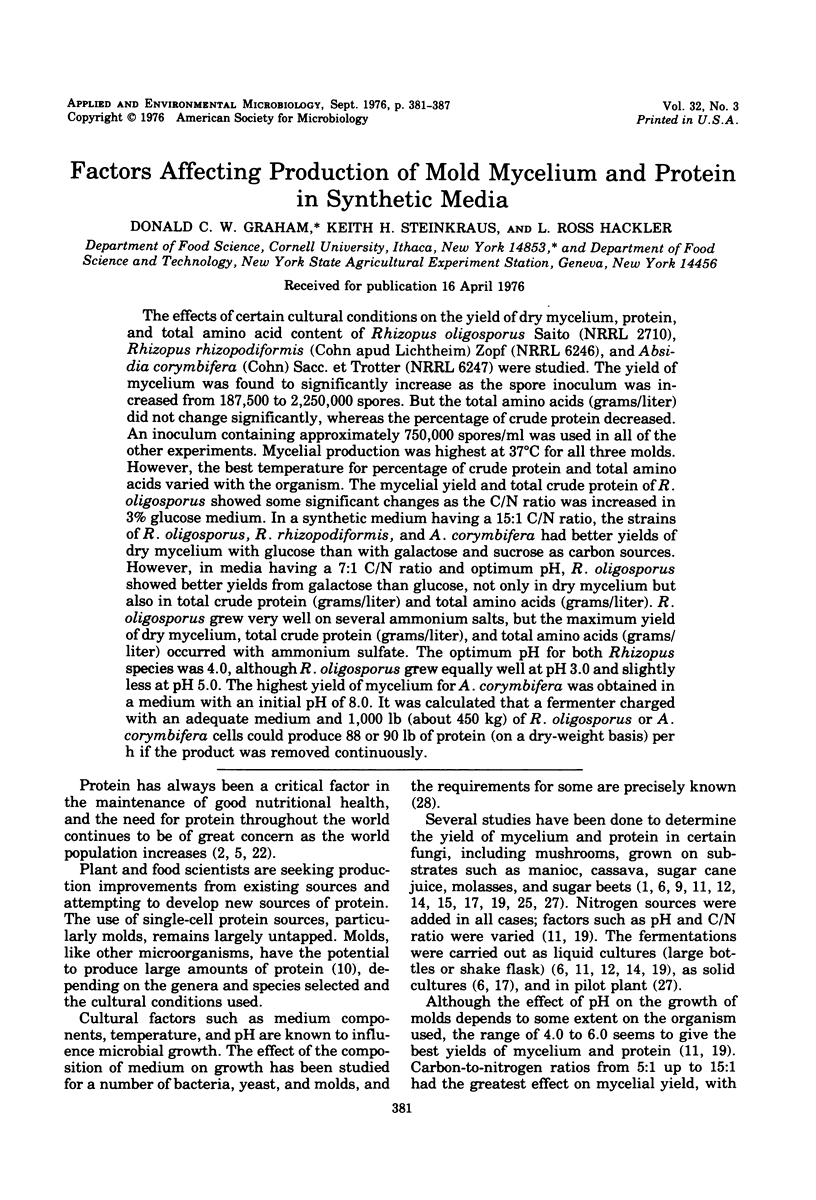
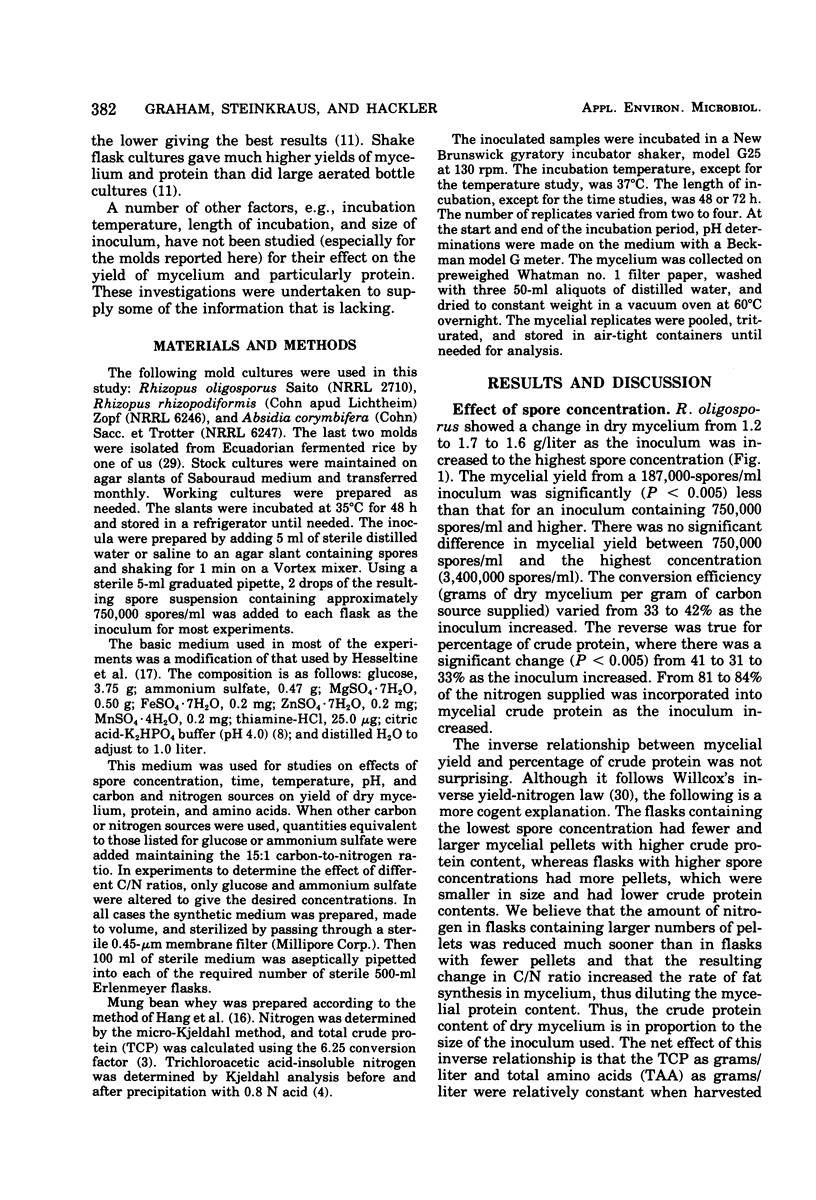
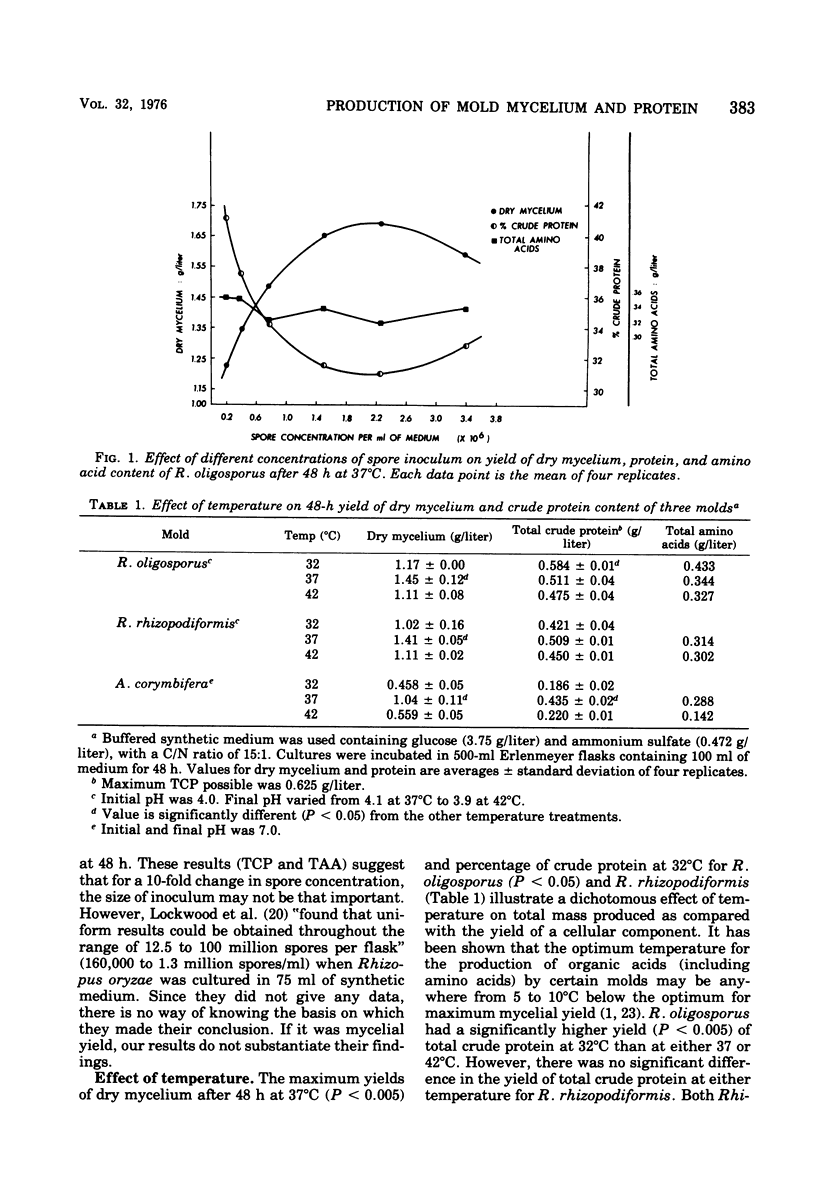
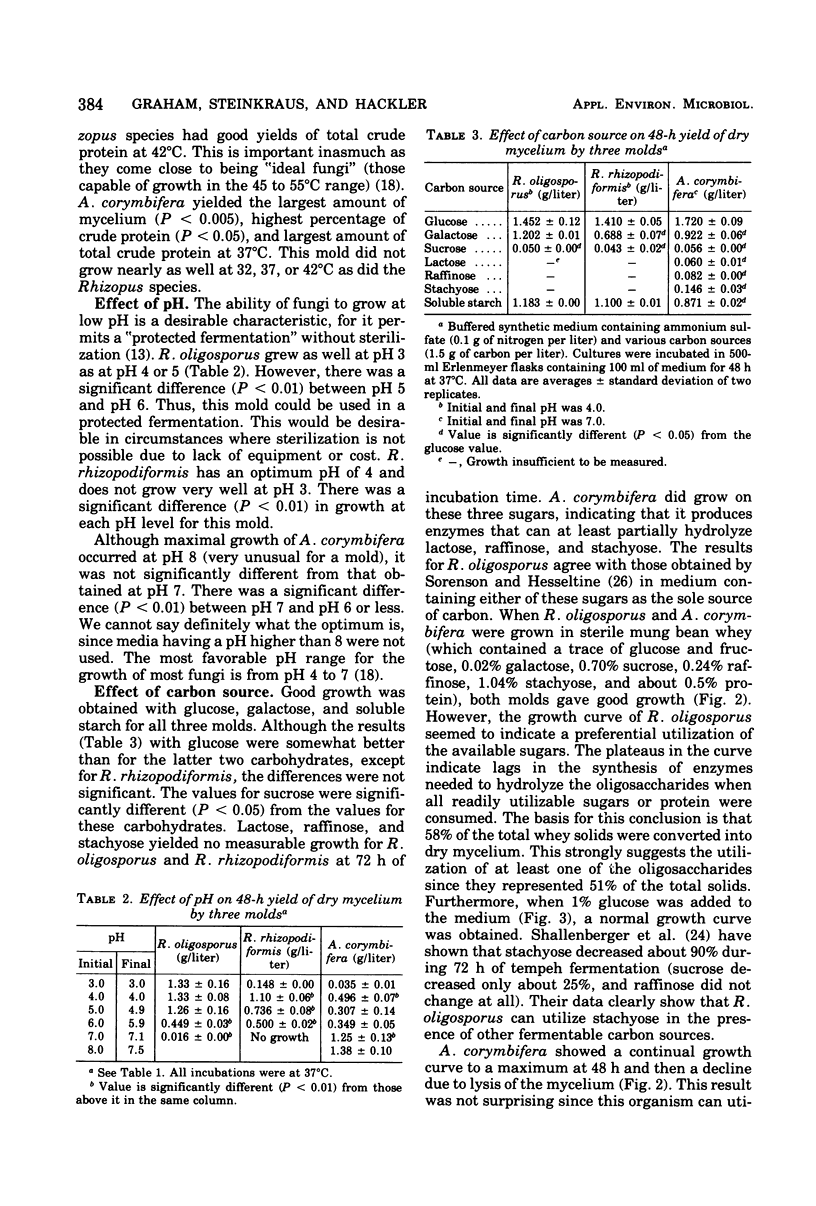
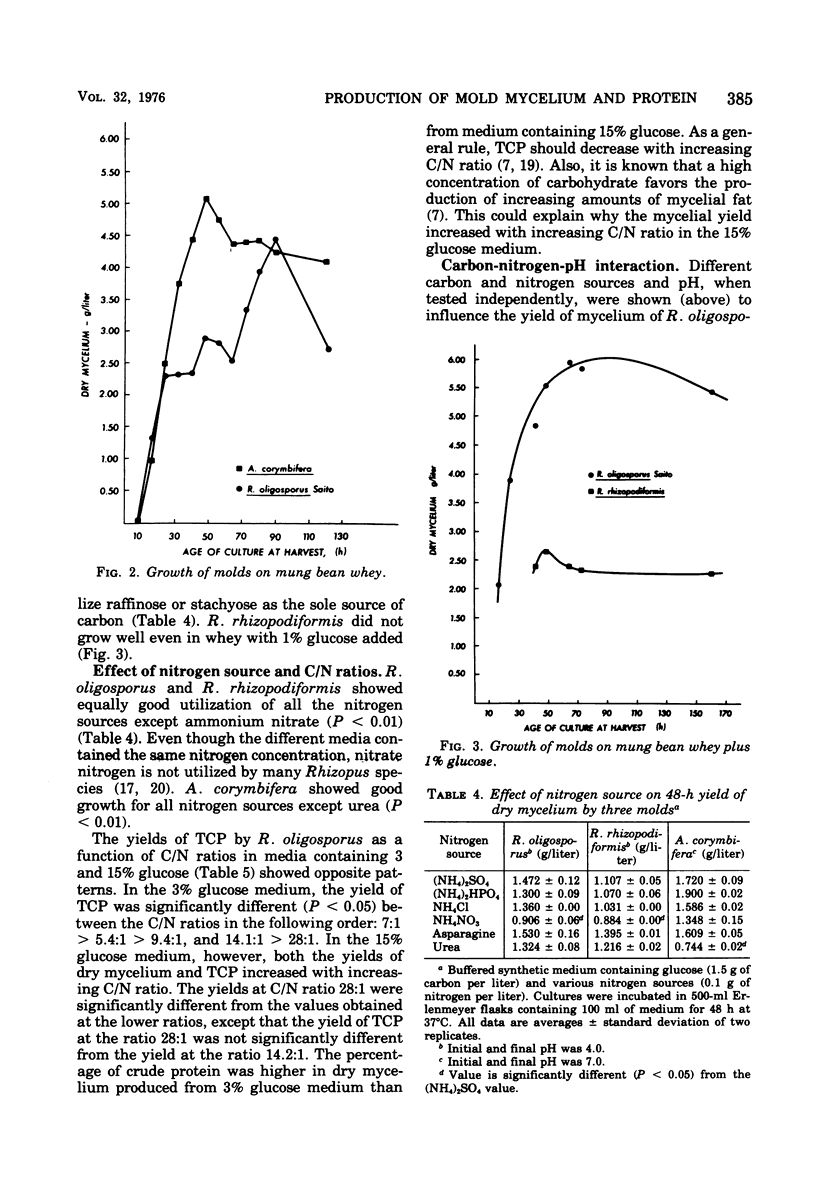
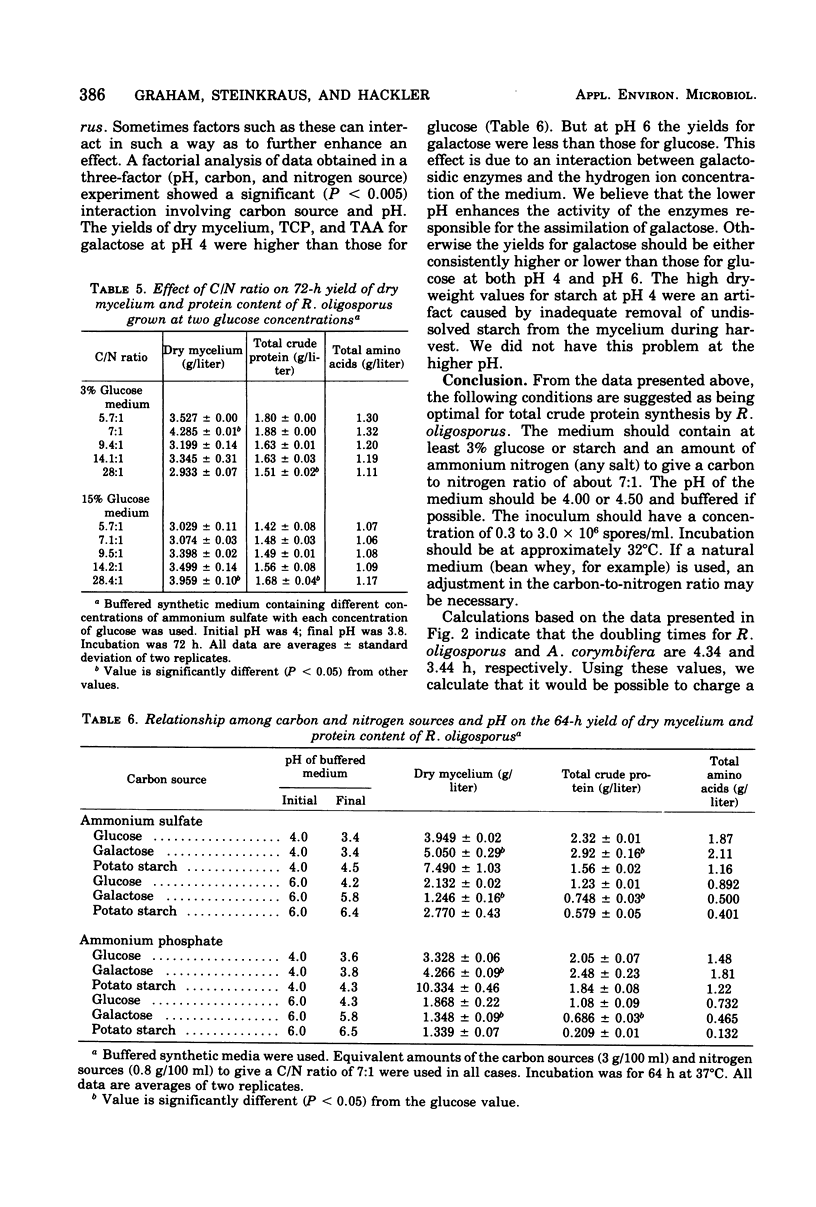
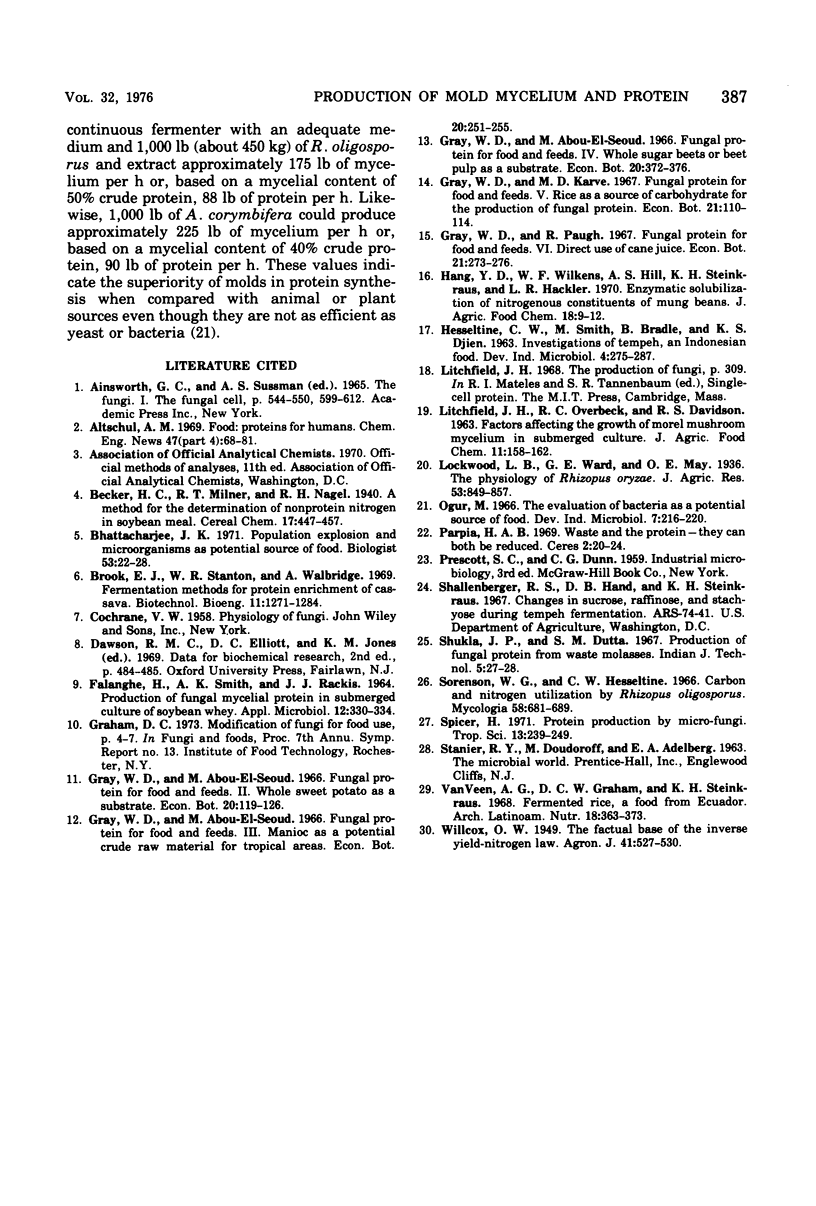
Selected References
These references are in PubMed. This may not be the complete list of references from this article.
- FALANGHE H., SMITH A. K., RACKIS J. J. PRODUCTION OF FUNGAL MYCELIAL PROTEIN IN SUBMERGED CULTURE OF SOYBEAN WHEY. Appl Microbiol. 1964 Jul;12:330–334. doi: 10.1128/am.12.4.330-334.1964. [DOI] [PMC free article] [PubMed] [Google Scholar]
- Sorenson W. G., Hesseltine C. W. Carbon and nitrogen utilization by Rhizopus oligosporus. Mycologia. 1966 Sep-Oct;58(5):681–689. [PubMed] [Google Scholar]


